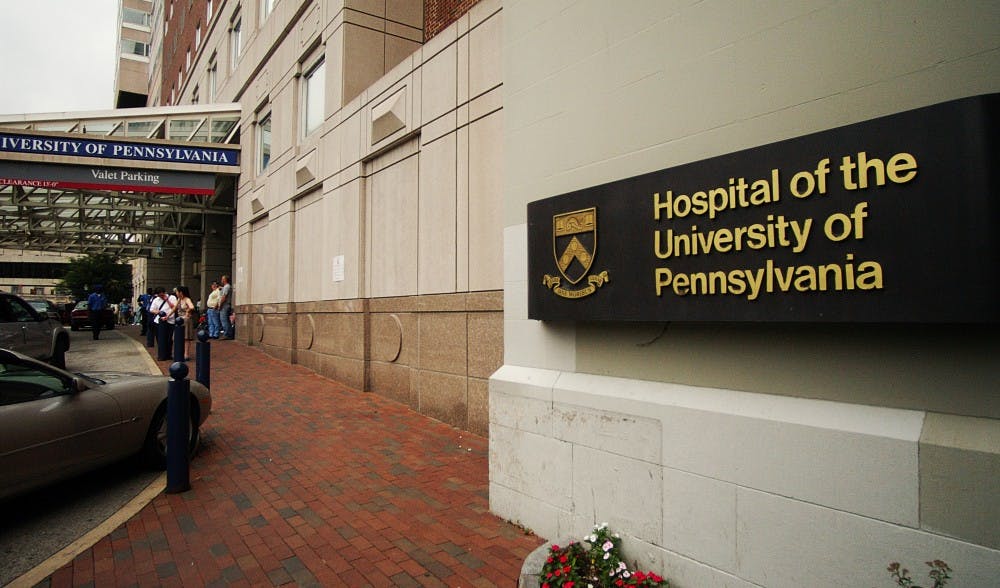
Going to the hospital might actually make you sicker. One in four people have dangerously high rates of in-hospital infections and injuries, according to a federal analysis of patient care.
The Hospital of the University of Pennsylvania is one of the worst offenders. With a Hospital-Acquired Condition score of 8.05 out of 10, it is well above the 7-point cutoff that separates safe hospitals from those with poor patient care. HUP’s score for serious complications — a 10 — was the highest among all offending institutions and its score of 9 for catheter associated urinary tract infections was also particularly high.
Offending hospitals will be penalized as part of the HAC Reduction Program created by the 2010 Affordable Care Act. HUP and other violating hospitals will have their Medicare payments lowered by 1 percent.
HUP, however, believes that Medicare’s metrics for determining patient care are skewed.
“These are not incidents — not errors. The penalties are based on percentages. Major teaching hospitals see much sicker patients, which can lead to lower performance,” said Susan Phillips, senior vice president of Public Affairs for Penn Medicine. “The new Medicare data for hospital-acquired conditions represents only one snapshot of patient outcomes, and each survey utilizes different information and methodology to generate their conclusions.”
Phillips could be right. According to an analysis by Ashish Jha, a professor at the Harvard School of Public Health, the HAC Reduction Program disproportionately targeted institutions with the sickest patients. He found that of the hospitals with the sickest patients, 32 percent were punished. Only 12 percent of those with the least complex cases were punished. Jha also found that hospitals with the poorest patients were most likely to be penalized.
“A simple way to think about it is this: Who is getting penalized? Large, urban, public, teaching hospitals in the Northeast with lots of poor patients. Who is not getting penalized? Small, rural, for-profit hospitals in the South,” Jha said. He found that the chances of a large, urban, public major teaching hospital with many poor patients like HUP getting penalized is 62 percent. The HAC program, he argues, would be more effective if it used a better metric like mortality rates or patient satisfaction levels.
The HAC Reduction Program is among many recent government initiatives to incentivize improved patient care. In 2012, the Centers for Medicare and Medicaid launched a “Partnership for Patients” to reduce levels of infection and injuries in hospitals. Other pay-for-performance programs that penalize unsafe hospitals include the value-based purchasing program and federal readmissions reduction program.
These programs have strong support among medical professionals. Joshua Adler, UCSF Medical Center’s chief medical officer, said that these programs have energized quality improvement and bolstered efforts to improve patient care. The HAC program “put attention to the issue of complications and that attention wasn’t everywhere,” said John Bulger, chief quality officer at Geisinger Health System, a chain of hospitals and clinics in Pennsylvania.
Whether or not HUP and other large public teaching hospitals are egregious offenders or victims of what Jha calls an unfair “teaching hospital penalty program,” they are making renewed efforts to improve patient care. The frequency of mistakes dropped by 17 percent between 2010 and 2013 according to a recent federal report and is continuing to fall.
“Our quality and safety program leads with ongoing training, intensive monitoring and real-time analysis? of performance and feedback,” Phillips said.
Nonetheless, one in eight hospital admissions in 2013 resulted in a patient injury, according to the report from the federal Agency for Healthcare Research and Quality. Hospitals still have a way to go in improving patient care.
The Daily Pennsylvanian is an independent, student-run newspaper. Please consider making a donation to support the coverage that shapes the University. Your generosity ensures a future of strong journalism at Penn.
DonatePlease note All comments are eligible for publication in The Daily Pennsylvanian.







